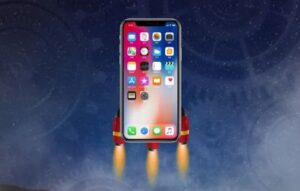Origins and early developments of animation
The animation Its roots lie in the 19th century, when optical devices were created that generated the illusion of movement through sequential images. These inventions were fundamental to its future development.
Experiments with devices such as the thaumatrope, zoetrope, and praxinoscope marked a turning point, paving the way for the first animated visual works that would amaze the world in the following decades.
Optical inventions of the 19th century
In the 19th century, several emerged optical devices These devices created the illusion of movement from still images, captivating audiences by displaying the illusion of life.
The thaumatrope, the zoetrope, and later the praxinoscope were the pioneers of this technique, which consisted of a rapid succession of images. These inventions are key to the history of animation.
These methods were based on retinal persistence, a visual phenomenon that made the perception of continuity in animation possible, laying the foundations for cinema and animation as we know it.
Early animated short films
He first animated short film One of the most well-known was “Humorous Phases of Funny Faces” (1906), created by James Stuart Blackton, which used drawings to tell a simple but innovative story.
In 1908, Émile Cohl presented “Fantasmagorie”, considered the first animated short film shown in a cinema, with a linear and surreal drawing style that surprised the viewers.
Winsor McCay integrated traditional animation with real footage in "Gertie the Dinosaur" (1914), taking a step forward in the interaction between animation and the real world.
Innovations and consolidation in the 20th century
The 20th century was crucial for the animationWith technical and narrative advances that laid the foundations of the medium, feature films were created and techniques were developed that revolutionized the industry.
From color short films to television series, animation established itself as a global art and industry, paving the way for future innovations and commercial and creative successes.
Classic animation and pioneering feature films
During the 1930s, Walt Disney made history with "Snow White and the Seven Dwarfs" (1937), the first animated feature film in color and with sound, which elevated animation to a complete art form.
In addition, techniques such as the rotoscopewhich allowed for more realistic movements, and the incorporation of color enriched the stories and characters, increasing the visual impact.
Meanwhile, Quirino Cristiani made history in Argentina with "El Apóstol" (1917), the world's first animated feature film, although sadly it has been lost, his legacy is fundamental to animation.
International expansion and serial animation
After World War II, animation expanded globally. Japan stood out with Osamu Tezuka, who created anime, a more fluid style characterized by its artistic originality.
In the United States, television popularized serial animation with series such as "The Flintstones" (1960), which brought animation to millions of homes and established a renewed format for the industry.
This expansion allowed for the diversification of styles and formats, promoting greater variety and experimentation in animated content internationally.
Technical and artistic experiments
The last decades of the 20th century saw important experiments in animation, combining traditional techniques with technical and artistic innovations that expanded creative possibilities.
Studios and artists experimented with different styles and technologies, exploring everything from stop motion to new forms of visual storytelling to enrich the viewer's experience.
The arrival of CGI in the mid-90s marked a radical change, but classic techniques continued to coexist and adapt, showcasing the richness and diversity of animation.
Digital evolution and new technologies
The appearance of the computer animation It revolutionized the industry, marking the beginning of a new, more sophisticated and versatile era in visual creation. CGI quickly became established.
Technological advances made it possible to create worlds and characters with great realism and complexity, expanding the narrative and visual possibilities that animation could previously offer.
Computer animation and CGI
In 1995, Pixar's "Toy Story" became the first feature film entirely generated by computer, opening the doors to 3D animation and new digital techniques for film and television.
Since then, CGI has become a standard for both film and television productions, allowing visual effects never before seen or imagined in animation.
This technology facilitates the creation of characters with more natural movements, detailed environments, and special effects that enrich the audience's visual experience.
Coexistence of traditional and digital techniques
Despite the rise of CGI, traditional techniques such as hand-drawn animation and stop motion are still valued and integrated with digital methods, creating hybrid works that combine both worlds.
The use of digital tools has allowed for the revitalization of classic techniques, improving quality and efficiency without losing the aesthetics and original charm of traditional animation.
This coexistence enriches creative diversity, offering artists multiple resources to tell unique stories and experiment with different visual styles.
Current and future perspectives
The mixed techniques They combine traditional animation, digital animation, and augmented reality, opening new avenues for creation and interaction with the viewer. This enriches the visual narrative.
The interactivity It has become a key element, allowing the public to influence the history and development of animation, especially in video games and digital platforms.
Mixed techniques and interactivity
The integration of mixed techniques It allows the creation of hybrid works that combine drawing, 3D modeling, and real-time visual effects, enhancing the user's immersive experience.
Interactivity in animations fosters a direct connection with the audience, integrating virtual and augmented reality elements that offer active and personalized participation.
These innovations expand creative and narrative possibilities, adapting animation to the current and future technological and cultural demands of viewers.
Global impact and creativity in animation
Animation today is a global phenomenon that influences all cultures, promoting diversity and artistic experimentation through universally accessible digital platforms.
Creativity has diversified, with independent artists and large studios exploring new styles, genres, and themes that reflect a more connected and complex society.
This global impact fosters cultural exchange, promoting innovative stories that challenge traditional boundaries and reinforce the importance of animation as an expressive medium.






